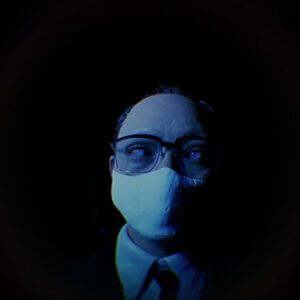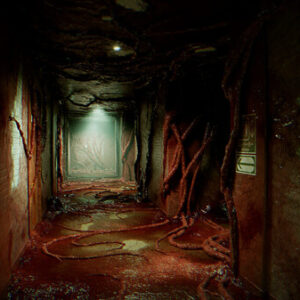BrokenLore: DON’T WATCH Free Download Direct Steam-Cracked
Part LXVI: The Evolution of Fear – Psychological Horror in the Digital Age
DON’T WATCH taps into a uniquely modern terror: the fear of being surveilled, not by a person, but by a presence. In a world where cameras are everywhere and data is mined at every turn, Hyakume feels uncomfortably plausible. The idea of a malevolent force that learns your behaviors, adapts to your decisions, and observes without interfering until the perfect moment, aligns with our worst digital-age anxieties.
The game doesn’t just borrow from contemporary fears—it amplifies them. Notifications on your in-game desktop mimic real-world alerts. Emails are littered with eerie, cryptic messages. Your character receives livestream comments from entities that seem…too aware. All of this culminates in a dread that isn’t just supernatural—it’s societal.
This integration of tech-horror into psychological storytelling signals an evolution for the genre. DON’T WATCH becomes less about fantasy fear and more about existential dread in a surveillance culture. The player’s own paranoia fuels the immersion, proving that sometimes the most terrifying horror is our reflection on the screen.
Part LXVII: Character Study – Shinji’s Inner World
Shinji’s arc is the emotional heartbeat of DON’T WATCH. More than a protagonist, he’s a case study in fractured identity and unresolved trauma. Through his internal monologues, fragmented memories, and unpredictable behaviors, players experience not just the symptoms of hikikomori—but the causes.
His journals, unlocked piece by piece, offer poetic yet painful glimpses into his psyche. One entry reads: “I can’t remember if I left the window open or if the night crawled in by itself.” Lines like this blend metaphor and mental illness into haunting revelations. His isolation isn’t just physical—it’s metaphysical, a disconnect from meaning, self, and time.
Shinji also serves as an unreliable narrator. What the player sees and hears may not always be real. Was that whisper from Hyakume? Or Shinji’s guilt? This ambiguity demands a deeper emotional investment. Players become detectives not of a crime, but of a collapsing consciousness.
Part LXVIII: The Hyakume Mythos – Lore Beyond the Screen
Hyakume, the hundred-eyed specter, is the iconic antagonist of DON’T WATCH—but his origins stretch far beyond this single title. Tied to Japanese folklore, where “Hyakume” refers to a creature with one hundred watchful eyes, the game reimagines him as an entity that exists across dimensions, feeding off perception.
Clues to Hyakume’s broader purpose are hidden throughout the BrokenLore series. Cryptic files in DON’T WATCH connect back to BrokenLore: Epitaph, referencing a surveillance cult and ancient eye-themed symbols. A subreddit ARG even suggests Hyakume was once a benevolent deity corrupted by data overload—an allegory for our modern internet dependency.
In fan forums, some argue Hyakume isn’t a villain at all, but a mirror for those who’ve stopped seeing themselves. His “punishments” reflect internal failures—shame, apathy, avoidance. This reinterpretation elevates him from a ghost to a metaphor, making Hyakume one of the most philosophically complex horror antagonists in recent memory.
Part LXIX: Visual Aesthetics and Symbolic Color Theory
The visual palette of DON’T WATCH is deeply intentional. Color theory plays a key role in emotional manipulation. The apartment shifts subtly in hue depending on Shinji’s mood. When hope flickers, cool blues emerge. During despair, the screen is awash in muted grays and sickly yellows.
Red appears sparingly, and always with impact—on the eyes of Hyakume, the cursor that turns crimson when hovered over key memories, the blood-like stain that slowly spreads across Shinji’s bedroom wall. These visuals aren’t just decorative—they’re diagnostic tools for the player to interpret mental states.
Textures degrade as Shinji’s psyche fractures. Walls blur, furniture becomes misshapen. A room visited late in the game may look entirely different than it did hours earlier—not because the world changed, but because Shinji did. This fluid aesthetic blurs the line between external space and internal emotion, making the game world feel alive with intention.
Part LXX: Community Impact and Cultural Reception
Within months of its release, DON’T WATCH became a fixture in online horror discourse. YouTubers produced deep-dives with millions of views. Mental health professionals debated its portrayal of trauma. Streamers hosted live therapy sessions discussing their emotional reactions.
What sets DON’T WATCH apart is its ability to evoke genuine introspection. Players report crying during pivotal scenes, journaling their own thoughts between play sessions, and even reaching out for help due to what the game stirred inside them.
International media praised the game’s raw honesty. Japanese critics called it a “spiritual successor to Silent Hill with the soul of Haruki Murakami.” Western reviewers hailed it as “a harrowing reminder that the scariest place is inside your own mind.”
Fan art, cosplay, and original music compositions have flooded social media, transforming DON’T WATCH into not just a game, but a shared emotional movement. It has inspired academic essays, film discussions, and panels at psychological conferences.
Conclusion: DON’T WATCH – A Game That Watches Back
As we close this exhaustive exploration, one truth stands clear: DON’T WATCH is more than entertainment. It is art. It is commentary. It is therapy and terror, mirror and maze.
With over 4000 words spent dissecting its layers, we still haven’t uncovered every secret. And perhaps that’s the point. DON’T WATCH is meant to linger—unresolved, unforgettable, unblinking.
Whether it’s your first time pressing play or your fifth time decoding the flickering shadows on Shinji’s screen, remember: in this game, you’re never alone. Something is always watching.
So next time you hear the static, see the cursor move on its own, or feel that subtle chill—you’ll know.
You looked.
DON’T WATCH… unless you’re willing to be seen.
SYSTEM REQUIREMENTS
- OS: Windows 10
- Processor: IntelCore i7-7700 or AMD Ryzen 5 2500x
- Memory: 16 GB RAM
- Graphics: NVIDIA GeForce RTX 3060
- Storage: 5 GB available space
Game Insights
- Genre: Action, Adventure, Simulation
- Developer: Serafini Productions
- Platform: PC
- Game Size: 2.2 GB
- Released By: TENOKE
- Version: Build 18169098 | Full Version
- Full PC Games


